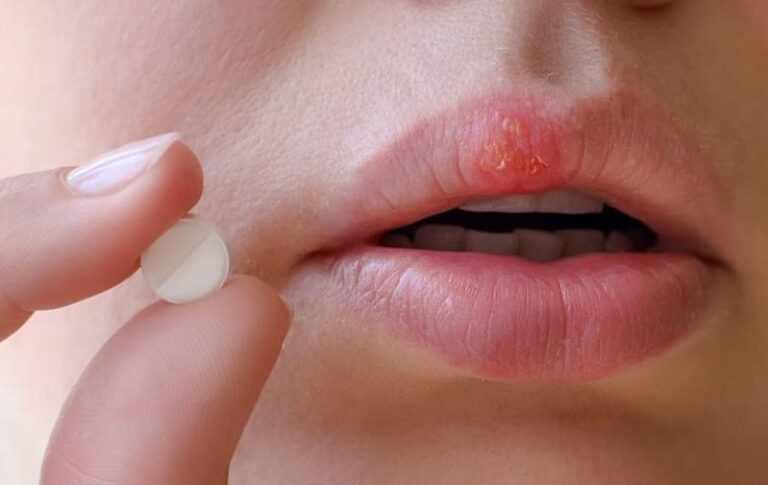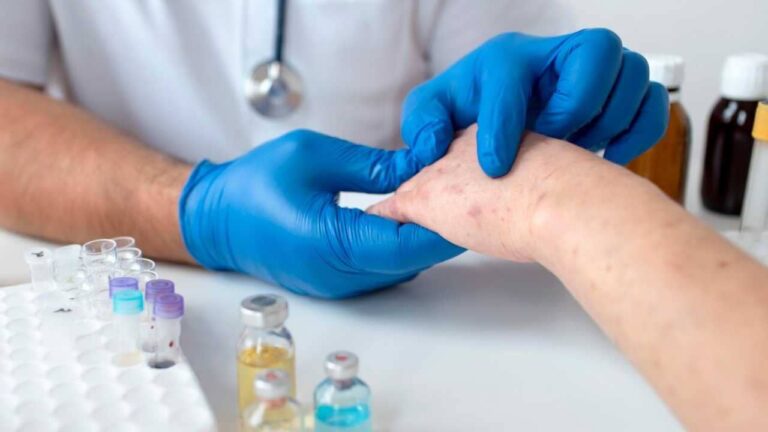Viral shedding in herpes refers to the release and presence of the herpes simplex virus (HSV-1 or HSV-2) from infected cells in the body, even in the absence of visible symptoms or active outbreaks. During viral shedding, the virus is released from infected cells and can be detected in bodily fluids such as saliva, genital secretions, or fluid from herpes blisters. This means that a person can transmit the virus even when they don’t have visible sores or active symptoms.
Viral shedding in herpes can occur intermittently, during periods when the virus is more active, or it can be continuous in some individuals. It’s important to note that even during viral shedding, the risk of transmission is lower compared to during an active outbreak when visible lesions are present.
Viral Shedding Causes
The main causes of viral shedding include:
Immune system suppression
When the immune system is weakened due to illness, stress, fatigue, or other factors, the herpes virus can reactivate and spread more easily.
Skin injuries
Wounds, cuts, or skin injuries can facilitate the entry of the virus and viral shedding.
Hormonal factors
Hormonal changes, such as those during menstruation in women, can trigger herpes outbreaks. Intimate contact: Direct contact with an infected person during an active herpes outbreak increases the risk of viral shedding.
Viral Shedding Symptoms
Symptoms of viral shedding can be asymptomatic in some cases, but many people experience symptoms during outbreaks. The main symptoms include:
Oral herpes
Fever blisters (vesicular lesions) that form on the lips, mouth, tongue, and gums. These sores are often painful and may be accompanied by itching, tingling, and a burning sensation.
Genital herpes
Small red blisters or sores that form in the genital area, anus, thighs, or buttocks. Symptoms can also include pain, itching, pain during urination, and flu-like symptoms.
Viral Shedding Treatments
While there is no definitive cure for herpes, there are treatments available to control symptoms, speed up healing, and reduce the risk of viral shedding. The main treatments include:
Antivirals
Antiviral medications are prescribed to reduce the intensity and duration of outbreaks and decrease the risk of viral shedding. These medications can be taken orally or applied topically, depending on the location of the outbreak.
Suppressive antiviral therapy
In cases of frequent recurrent herpes or in people at high risk of viral shedding, suppressive antiviral therapy may be recommended. In this type of treatment, antiviral medications are taken daily to reduce the frequency and severity of outbreaks and significantly decrease the risk of viral transmission.
Self-care measures
In addition to using antiviral medications, it is important to adopt self-care measures to help control symptoms and prevent viral shedding. This includes keeping the affected area clean and dry, avoiding direct contact with lesions, wearing loose and comfortable cotton underwear, managing stress, and maintaining a healthy lifestyle including a good diet and adequate sleep.
Education and prevention
Education about herpes and its modes of transmission is crucial in preventing viral shedding. It is important to learn about the symptoms, managing the condition, and precautions to take to avoid spreading the virus. Additionally, using condoms during sexual intercourse can significantly reduce the risk of genital herpes transmission.
Sumary
Viral shedding is a challenge faced by many people worldwide. Understanding the causes, symptoms, and treatments is crucial for managing the condition and reducing the risk of transmission.
While there is no definitive cure for herpes, the use of antiviral medications and adopting self-care measures can help control symptoms, speed up healing, and prevent viral shedding.
It is important to seek medical guidance for proper diagnosis and an individualized treatment plan. Additionally, education and awareness are essential in preventing the spread of the virus and ensuring a better quality of life for those affected by viral herpes shedding.




